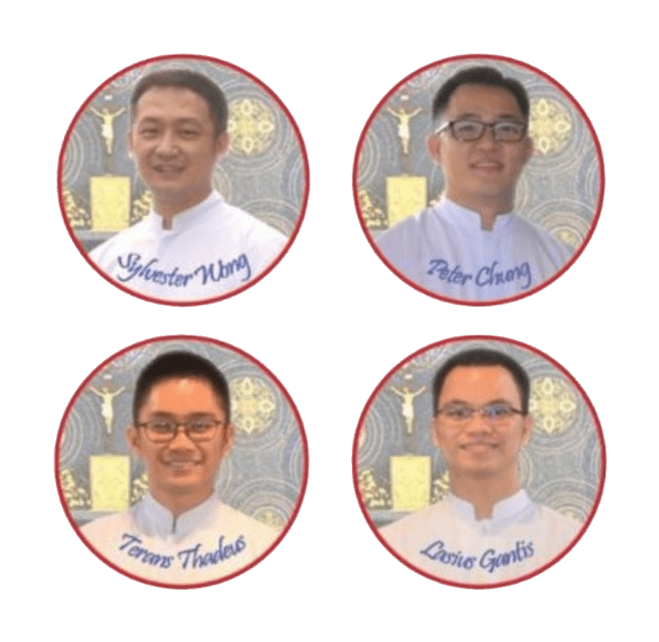Montfort Brothers mark 300 years of existence – Part 2
— continue form previous issue
3. The Care for the Poor
Searching for the poor, having poor people around him, serving the poor, is not a psychological or social compensation for a man born in a family of lower middle class.
To the disciples of John the Baptist, who was asking about Him, Jesus replied: “…..The poor have good news preached to them.” The Kingdom has arrived! Jesus makes of the care for the poor, the sign that the Kingdom is coming; that is there, at the door. For Montfort, it is the touchstone of conversion.
Like Jesus, from his young age, Montfort makes the Kingdom of God happen by healing the sick, clothing the naked, feeding the hungry, rescuing the distressed, opening the minds, and reconciling people. Throughout his life, he makes real the situations found in Chapter 25 of Matthew’s Gospel: the genuine poor is Jesus, and where Jesus is, there is the Kingdom. When, in the dark, he carries a bedridden on his shoulders, Montfort shouts: “Open to Jesus Christ”; he also shouts: “Open your hearts to the Kingdom that is coming!”
During his missions, he prepared the people to such works of mercy by the catechism, small schools, preaching, but above all, by the establishment of shelters called “PROVIDENCE”, where the people were invited to provide the poor with food and clothing.
It has been said that the fruits of the mission could be measured by the commitment of the people in the “PROVIDENCE”.
2. The Cross
“The Cross is a mystery/most secret here below/ without abundant lights/its meaning is not known.” Montfort desires the Cross. He kisses it as a sign of communion with the Crucified and Incarnate Wisdom. Throughout his life he witnessed the struggle of the worldly wisdom rejecting God’s Wisdom. The most symbolic day of this struggle was on September 13, 1710, when Montfort was forbidden to bless the monumental Calvary that he had built on the moor of Pontchateau, where thousands of people of all walks of life worked together for a whole year.
The Calvary blessed on the last day of each mission, showed the victory of the Cross and also the continuity of the struggle between the two wisdoms: victory is there, but not complete. When the Cross was not present in the missionary’s life, it would be the sign that the Kingdom of God was put on hold. Great pain for Montfort, and cause for anguish! “Never the Cross without Jesus or Jesus without the Cross.” Hence his well-known phrase: “No Cross, what a Cross!” when the mission was going on too smoothly.
3. The Baptismal Promises
On June 6, 1706, during the audience granted by Pope Clement XI, Montfort got a roadmap: “To renew the spirit of Christianity by the renewal of baptismal promises.”
To remind himself that his life, as a baptized person, should be a continuous conversion from worldly wisdom to the Wisdom of God, ‘JESUS’. Unaware that his vocabulary could be irritating to future generations, the missionary articulates his spirituality and his preaching around a strong word: slavery. At baptism, the Christian has chosen Jesus as his Master and Sovereign and undertaken to depend upon him as a slave of love. But this dependence, in freedom and love, must be renewed daily and in a permanent struggle.
The missions are a preparation to renew the baptismal promises. And those who can write sing “taking the Church a witness”, a covenant with God.
4. Mary – ‘The Consecration to Jesus through Mary’
St Louis Marie Grignion de Montfort does not exclude the expressions of affection and trust in Mary, which his biographers like to report, and were acknowledged by the crowds who called him, “the Father with the huge rosary.” In this, he is not really a pioneer. “This devotion is not new. It is so ancient that we do not know when it began.”
The Marian devotion is a spiritual path to bring about the Reign of Jesus– Wisdom. The spirit of this devotion is to make a soul inwardly dependent of Mary “and of Jesus through her.”
The argument, all centred on God, is simple in its biblical and theological support. The implementation is wonderful.
1. The Kingdom of God, that is Jesus-Wisdom, entered the history of humanity through Mary;
2. The Father’s will to give Jesus to the world by Mary does not change;
3. The Kingdom of Jesus – the conversion from the slavery of evil to the total belonging to Jesus, which is the perfect fulfilment of baptism – hence will come through Mary as well.
At this point, Montfort wants to reveal his secret as a missionary: The Secret of Mary, which “the Most High God taught him”, according to his own words: “the Kingdom of Jesus in the hearts and in society, depends directly on the Reign of Mary. So there is no better way to bring the Kingdom of Jesus than the consecration of oneself to Mary.” – “I surrender and consecrate myself to you, body and soul, with all that I possess, both spiritual and material, even including the value of all my good actions, past, and to come…”
This consecration of oneself to Mary is the privileged getaway to enter in relation with Jesus. “Virgin most faithful, make me in everything so committed a disciple, imitator of Jesus, your Son, Incarnate Wisdom.” So there is correspondence between the consecration and the renewal of the baptismal promises.





This Post Has 0 Comments